This cold-process shower soap recipe is the best ever. It makes a moisturizing yet cleansing bar with tons of lather. Please read below the recipe for tips on substations, safety, and storage, as well as step-by-step photos. If you’re brand new to soapmaking, there’s a lot to learn! You’ll want to watch the video and read the whole post before you start.

The Best Cold Process Soap Recipe
Equipment
- Safety equipment (gloves, goggles, apron)
Ingredients
- 11 ounces coconut oil
- 9 ounces olive oil
- 9 ounces palm oil
- 2 ounces sweet almond oil
- 4 ounces castor oil
- 4 ounces avocado oil
- 2 ounces mango butter
- 5.83 ounces lye
- 10-15 ounces water
- 3 tablespoons fragrance oil for a strong scent, vary this to your preferences
- 2 teaspoons sodium lactate optional, for a harder bar
- colorant or mica optional
Save This Recipe
You'll join my email list which you will love. And if you don't, unsubscribe in one click. ❤️
Instructions
- Make lye water. Using a digital scale, measure out the lye and water in separate glass containers. Combine them by adding the lye to the water. (Remember: snow floats on the lake.). Stir until the lye dissolves. The temperature will shoot up. Place this in a safe place to cool.

- Melt oils and butters. While the lye solution is cooling, measure out the oils and butters and combine them in a large stainless pot. Melt them over low heat and heat them up to 130-140 degrees. Set them aside to cool.

- Let cool. After 2 hours, check the temperature of both solutions. They should be around 110 degrees. (A range of 100-120 is fine.). If not, allow them to cool longer.
- Prep for mixing. Prepare your mold and measure out any fragrance or color you will be adding. (For best blending of colors, mix some color into a few drops of melted oils.). If using sodium lactate, add it to the lye water at this time.
- Blend to trace. Pour the water and lye solution into the pot with the melted oils. Blend with a stick blender until thin trace is reached. The soap batter will noticeable thicken and a trail of soap will sit on top of the liquid rather than immediately sinking in. (This will take about 1 minute.). Add the color and fragrance and stir by hand.

- Pour in mold. Immediately pour the soap batter into the mold. Place in a turned-off oven or wrap with blankets to insulate the soap.

- Cut bars and let cure. After 24 hours of curing, unmold and cut into bars. The bars may seem slightly soft but will harden considerably during the curing process. Allow to cure at least 3 weeks in a well-ventilated place.

Video
Notes
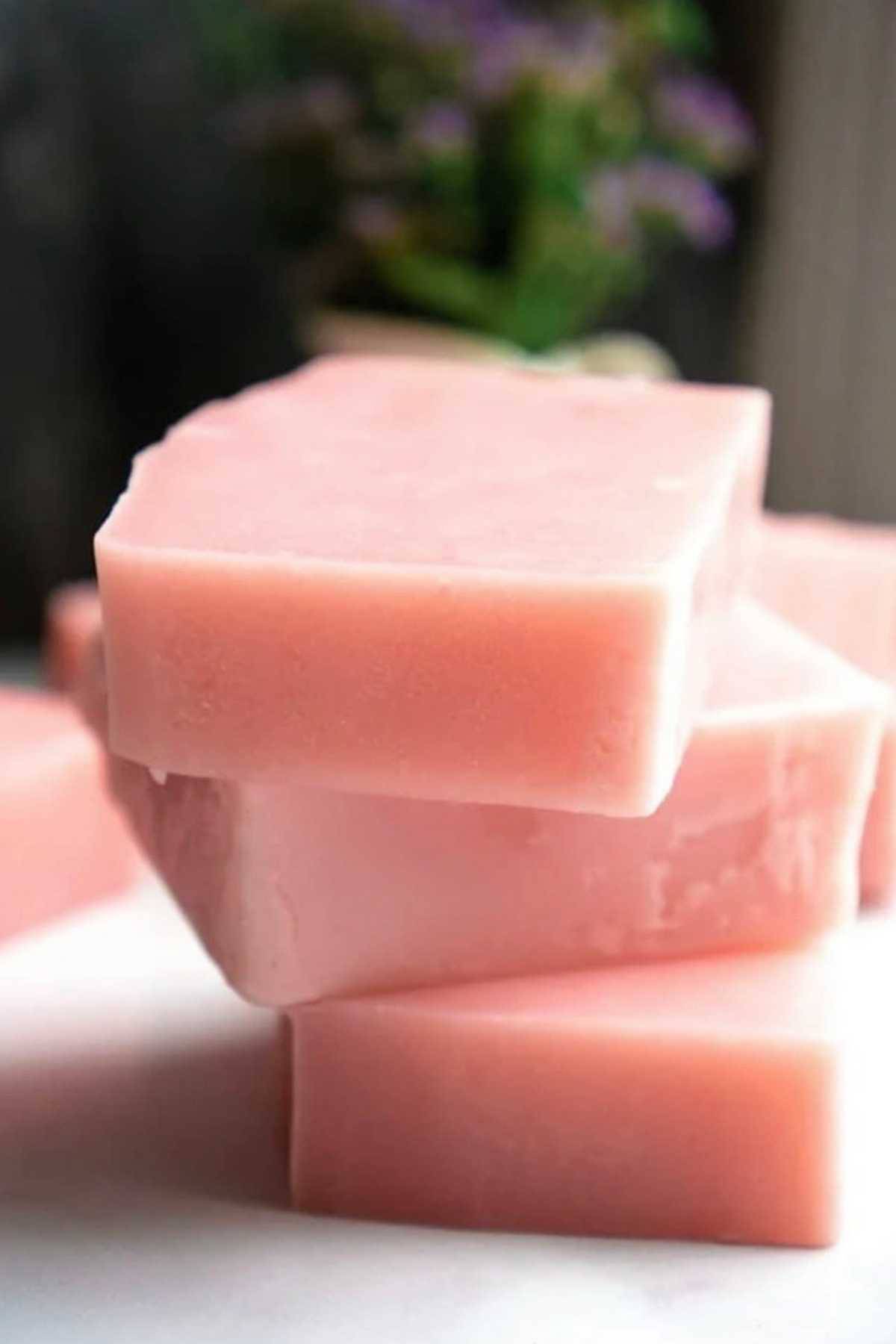
Ingredient Substitutions and Notes
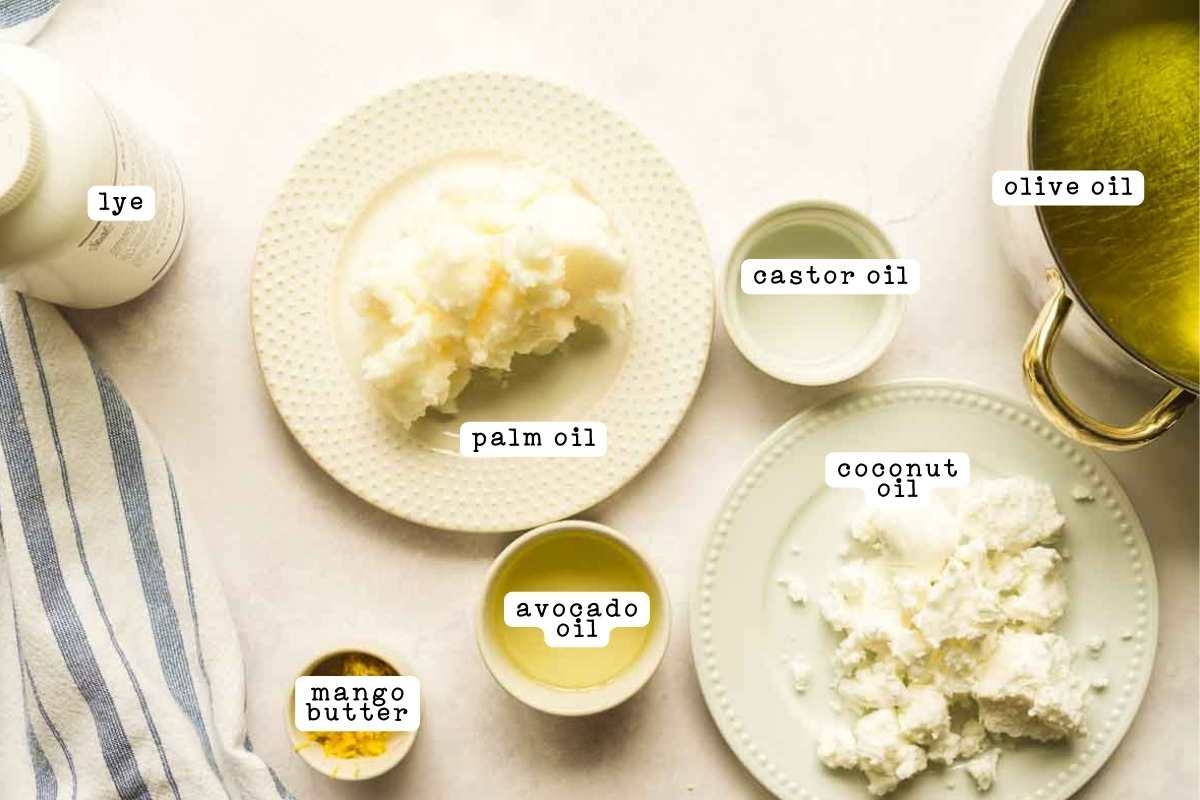
- Coconut Oil: A staple in soap making, coconut oil provides a rich lather and hardness to the soap. It is highly cleansing and can strip away excess oil, making it ideal for oily skin types.
- Olive Oil: Known for its moisturizing properties, olive oil makes the soap smoother and less drying. It’s great for sensitive skin and contributes to the soap’s gentle cleansing ability.
- Palm Oil: Adds hardness to your soap bars, helping them maintain shape and last longer. It also contributes to lather quality, though it’s important to source sustainably due to environmental concerns.
- Sweet Almond Oil: This oil is excellent for its conditioning properties, adding softness and an elegant feel to the soap. It’s suitable for all skin types, especially dry skin.
- Castor Oil: A unique ingredient that boosts lather, making your soap rich and creamy. It’s also hydrating and helps draw moisture to the skin.
- Avocado Oil: Loaded with vitamins and minerals, avocado oil enhances the moisturizing power of your soap. It’s particularly good for dry and sensitive skin.
- Mango Butter: Provides a conditioning and moisturizing effect, making the soap more luxurious. Mango butter is rich in antioxidants and can help to soothe and soften the skin.
- Lye (Sodium Hydroxide): Essential for saponification, the chemical reaction that creates soap. Lye must be handled with care, but it is completely safe once the soap has cured.
- Water: Acts as a solvent for the lye and helps to control the saponification process. Distilled water is best to prevent any impurities from affecting the soap.
- Fragrance Oil: Adds a personal touch to your soap with your favorite scents. Quality fragrance oils are designed to be skin-safe and can significantly influence the sensory experience of using your soap.
- Sodium Lactate (optional): A salt solution that makes the soap bar harder and easier to unmold. While optional, it’s beneficial for achieving a smoother finish.
- Colorant or Mica (optional): These additives bring vibrant colors to your soap, enhancing its visual appeal. They can be used to achieve a wide range of artistic effects, like swirls or layers.
Storage Instructions
Once fully cured, homemade soap should be stored in a dry, well-ventilated spot. I like to put it in shoe boxes in the closet with layers of newspaper in between the bars.
While it is in use, use a soap saver to keep your bar dry. It will last much longer.
Common Issues and Fixes
A 10-inch silicone mold. It’s my favorite for most soaps.
If your soap is too soft, it might need more time to cure. Adding sodium lactate or using oils with higher stearic acid content can also help create a harder bar.
It is a pink mica from Nurture Soap. You can find it here.
Yes, absolutely. I’d recommend using sodium lactate since it can be a bit soft when unmolding it.
This is a 100% personal preference (except for the fact that florals are more difficult to work with). My personal favorites are Comfort and Joy from Nurture Soap and Mango Mango from Brambleberry.
Yes! I used to swirl it all the time before I got too lazy.
You sure can. You’ll need the following percentages:
Coconut Oil: 26.83%
Mango Butter: 4.88%
Olive Oil: 21.95%
Palm Oil: 21.95%
Sweet Almond Oil: 4.88%
Enter them into a soap calculator with the desired size of your batch and it will give you the correct amounts.
The gel phase is a part of the saponification process where the soap heats up and becomes translucent. This can help create a smoother, more uniform bar.
Yes, essential oils can be used as a natural alternative to fragrance oils. Just be sure to use skin-safe essential oils and follow recommended usage rates.
This recipe is a great way to start, but if it’s your first time, you might want to try a more basic recipe with fewer oils. Cold process soapmaking can be complex, so starting simple is a good idea.
Distilled water is free from impurities that can affect the chemical reaction during the saponification process. Using distilled water ensures a more consistent result.
More Great Cold Process Soap Recipes:
- Mix-ins are fun! Try this gardener’s soap recipe.
- You can make your own bar dish soap.
- If you’re looking for something palm-free, try my grapefruit soap bar.
As you continue soap-making journey, remember the importance of safety, stay patient and careful, and enjoy of crafting something with your own hands.






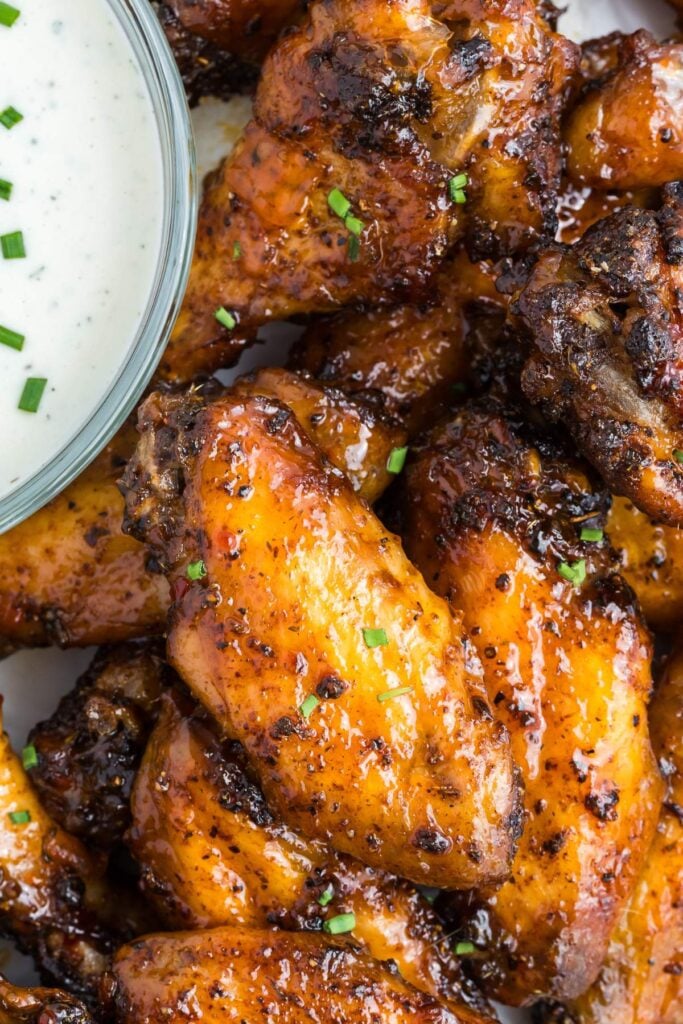
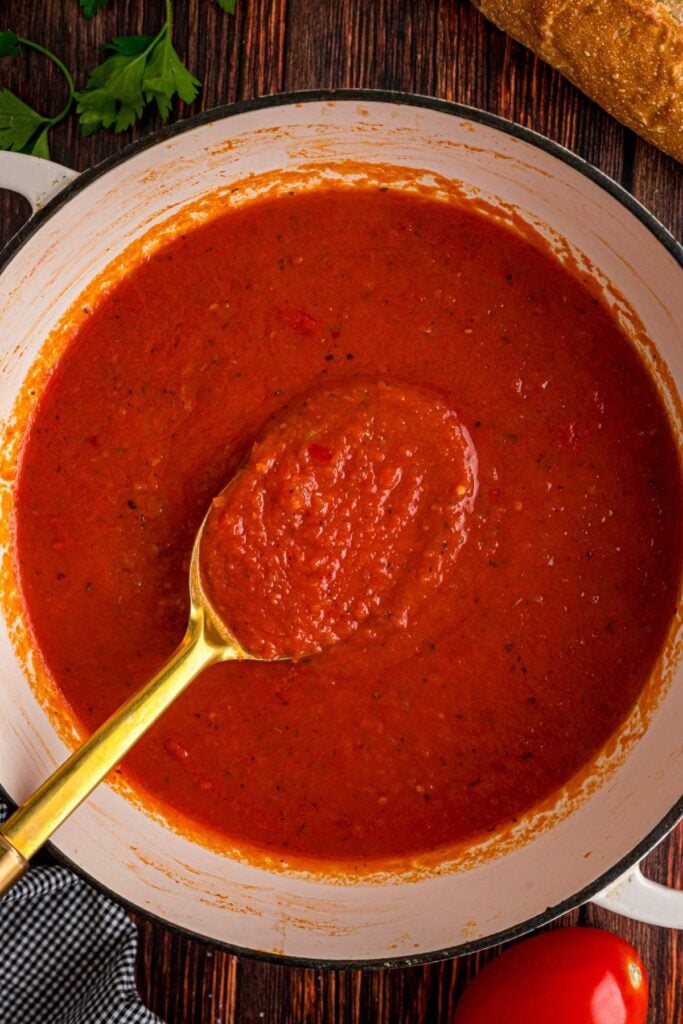

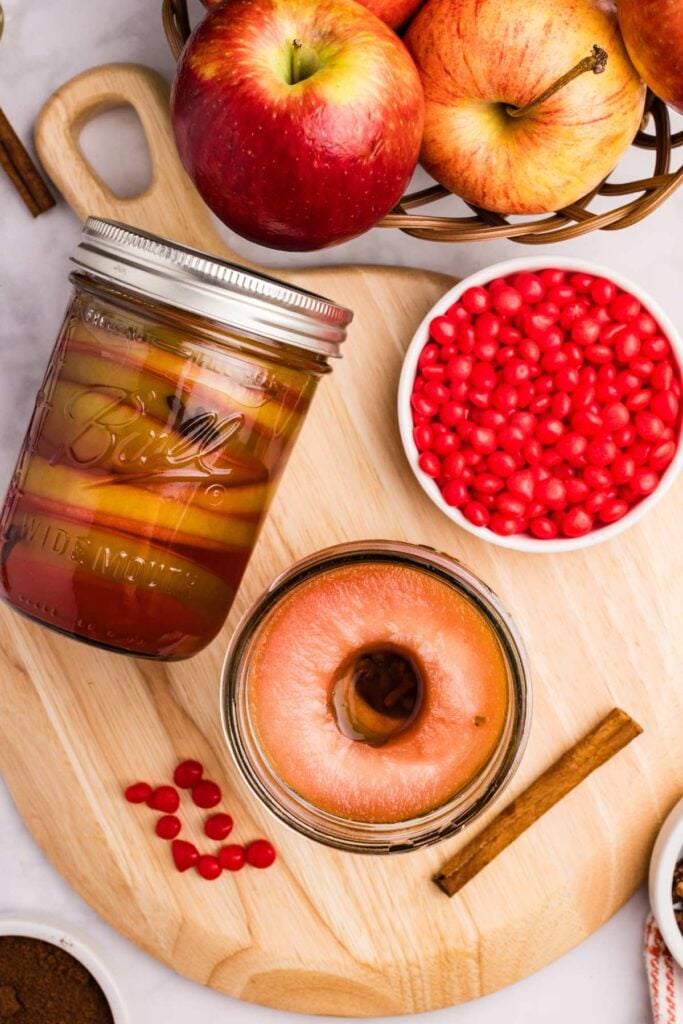
Hi mam…. Am in india. Am a beginner of the soap making… Ur vedio is very useful… I willtry for the recipe… pls tell this recipe suitable for all skin stypes or dry skin only… Ur receipes are simple and easy… Pls upload the beginner receipe vedios… Thank you mam
this is suitable for any skin type! search the site for beginner soap and you’ll see more beginner friendly recipes ????
Hi! Thank you for sharing your wonderful soap recipes. Do you have a soap recipe for oily skin? My husband likes Dr Bronner’s peppermint soap because his skin is so oily. I’d love to make something for him. Thank you.
-Heather
hi heather! I don’t have one specifically for oily skin, but I should work on one because my husband is the same! as a general rule, higher coconut oil and lower super fat (around 5%) will be better for oily skin.
Can I substitute shea butter in place of mango butter and use the same lye measure?
they are generally a good substitution for each other. to be extra sure, you’ll need to run the recipe through a lye calculator with shea butter
Hi Katie…Is this soap making going to be moisturizing for skin…I find that many natural soaps dry out my skin, strip off my natural oils…I want the soap to feel nice and moisturizing on my skin….will this recipe to that for my skin? thanks
hi Angie, it’s VERY moisturizing!
Is the ovcado oil and other oils in form of the butter or liquid oils…just new to this? thanks
the avocado oil, almond oil, and olive are liquid. the others are solid.
How do you get the pink color in this soap?
its a pink mica, you can find it from amazon or soap supply shops
How much pink mica do you use?
I am super excited to get in to soap making! I have a lot of beeswax. Is there anything in this recipe I could substitute it for?
hi Laurie, you can’t substitute beeswax because it is very very hard and changes the soap quite a bit. however I do have a beginner friendly recipe that uses beeswax: https://heartscontentfarmhouse.com/cold-process-baby-soap-recipe/
if you search my site for beeswax you’ll see a more advanced recipe as well as a body cream that use beeswax as well 🙂
Thank you so much!!!
I feel only adding 3 Table spoons of F/O is to little it wont hardly smell all.. maybe 4% to 5% would be better did yours smell much for only using that little ? ;o)
Could this be use with goats milk?
sure 🙂
Wow that’s great, can I know what oil can I replace for mango butter?
shea butter, but I would run it through a soap calculator first
Thank you Katie for your reply. I will go check out the site you suggested and see if I can figure out the amount of each essential oil to use in my soap. I know you have to be very careful using some essential oils like clove, so hesitate to figure this out on my own.
To make Thieves blend cold process soap, how much eucalyptus, clove bud, cinnamon leaf, rosemary and lemon would I to use to make it? If you can tell me, it would be greatly appreciated.
I’m so sorry Nancy I don’t know much about essential oils. I will tell you the fragrance doesn’t always come through much after the soap cures. this might help: https://www.modernsoapmaking.com/essential-oil-usage-rates-ifra-guidelines/
Thank you Katie for your reply. I will go check out the site you suggested and see if I can figure out the amount of each essential oil to use in my soap. I know you have to be very careful using some essential oils like clove, so hesitate to figure this out on my own.
Eocalc and Holly from Missouri River does one and uses that essential oil site
Hi.
Just love this simple but beautiful soap. What did you use to color it so pretty, and how much?
Thanks, Jeanette
Hi Jeanette,
I used a pink mica from amazon. It came in this set. https://amzn.to/38VWXB5 I use a teaspoon, mix it with a few drops of water, and blend it in.
I would love to try your soap recipe. Are you using regular coconut oil that is solid when cool or fractured coconut oil that is liquid form? Thanks in advance!
regular 🙂
And is it ABSOLUTELY necessary to use lye. Or is there a substitute for it. I just can’t find a place around me that sells it and I never have money on my card to order some. And still don’t know where I would go to get it online.
hi marshell,
yes its absolutely necessary use lye. without it, you’ll just have a pot of oils. you can get it on amazon, here: https://amzn.to/2ULtDZW
sometimes hardware stores will carry it labeled as a drain cleaner. you’ll need to check the label and make sure it says 99% or 100% lye (aka sodium hydroxide).
What is the superfat of this recipe? Thanks
5% 🙂 (Seems harsh but it’s not)
I love your recipe. I am just looking for an alternative to using palm oil, due to deforestation to make room for palm oil plantations and our endangered Orangutan population is disappearing at an alarming rate. Could you give me some substitution ideas, please? I try to avoid any food or cosmetics that use palm oil for that reason. I really appreciate all your great ideas.
hi Carla,
I would try babassoa oil or tallow. you would want to run everything through a soap calculator again 🙂
I am missing why the added water in the recipe does not have a specific amount. What am I missing?
Water is somewhat flexible in a soap recipe. It doesn’t really affect the finished product. Less water will just mean that it cures faster (called “a water discount”). Just go with an amount in the middle if you don’t have a preference.
if you are putting the soap through saponification in the oven, it should be ready to use right away.. ?
thanks for sharing ! excellent recipe..
“Substitutions for Mango Butter in Soap When we take a look at the fatty acid profile chart, you can sort it by stearic acid or oleic acid to find substitutes. You can substitute mango butter with another butter such as shea, cocoa or even kokum. Soap Recipes Using Mango Butter “
Hi Lisa, I know that its fully saponified after it gels… but for some reason it seems to last longer for me if it cures a few weeks? Not sure if that’s my imagination but I always say to wait to use it, just to be sure! 🙂
I was just curious because I’m new at this and I didn’t know what is 3T for the scent or oils you can put in.
3 tablespoons :). you can add a little more or a little less, too.
If you want to do by the oven you call it « hot process ». You bake soap at 50 degrees during 3 hours. After, you let your soap stand without heat for 24 hours. Your soap is ready to use but soft. Wait about one week and more to harden…
I love how each different kind of oil is being mixed in appropriate in order to make some good and unique kind of soap. I hope there won’t be any kind of problem involved after adding shea butter to it. Because the oil is all about conditioning while shea butter ensure our skin remain soft.Check out organic bath and body products.
I have all the oils except palm oil. What would be a good substitute?
Thank you!
babbasou or tallow are considered good substitutes for palm. you would have to re-run through a lye calculator, though.
Hello Katie,
I have a question, Great video by the way!! Can’t wait to try this recipe. I would like to add half water & half goat’s milk to this recipe for my 10 inch mold. Just to add a little richness. Do I just do 5 oz water & 5 oz of the goat’s milk? And does the lye amount change since adding the milk?
Rhanks
ThT should work great! The lye will stay the same. I always like to freeze goat milk before adding the lye so it doesn’t scorch 🙂